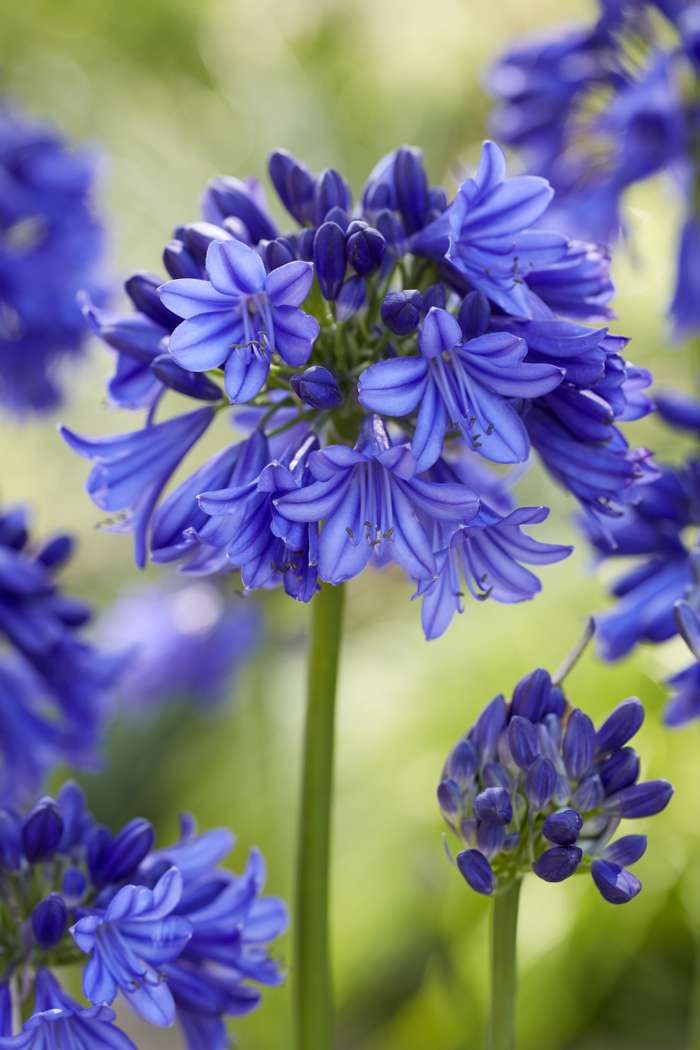Grasping the Art of Agapanthus Treatment: Important Steps for Healthy And Balanced Growth and Dynamic Flowers
In the realm of horticulture, the cultivation of agapanthus stands as a fulfilling endeavor for those that seek to support these elegant flowering plants. From picking the right variety to grasping trimming techniques, the journey towards growing thriving agapanthus plants is complex and holds the vital to opening the complete potential of these agricultural gems.

Choosing the Right Agapanthus Range

When selecting the right Agapanthus selection for your yard, consider factors such as environment suitability, bloom shade, and growth habit. In addition, take into consideration the environment in your region to make sure the Agapanthus range you pick can grow in your details conditions. Understanding the growth behavior of various Agapanthus ranges is essential for appropriate placement within your yard.
Perfect Growing Conditions
Thinking about the optimum environmental demands is necessary for effective Agapanthus farming. Agapanthus flourishes in well-draining soil with a somewhat acidic to neutral pH degree. When planting, select a place that receives complete sunlight to partial shade. In hotter climates, giving some afternoon shade can prevent scorching of the leaves. Agapanthus plants are delicate to cold temperature levels and ought to be safeguarded from frost during winter season.
To make sure healthy growth and dynamic blooms, plant Agapanthus bulbs at a depth of concerning 2-4 inches and space them 8-12 inches apart. Mulching around the base of the plants assists preserve dampness and subdues weed growth.
Watering and Fertilizing Tips
Preserving proper moisture degrees and giving necessary nutrients are crucial elements in the care routine for Agapanthus plants. It is crucial to strike an equilibrium when it comes to sprinkling Agapanthus. If overwatered, these plants favor consistently wet soil however are susceptible to root rot. During the expanding season, water deeply as soon as a week, making sure the soil is well-draining to avoid waterlogging. In hotter climates or throughout periods of dry spell, even more regular watering may be necessary to keep the dirt equally moist. Nonetheless, lower watering in the winter months to stop water logged problems.
Feeding Agapanthus is crucial for advertising healthy and balanced growth and respected flowers. Use a balanced fertilizer, such as a 10-10-10 formula, in the very early springtime as new development emerges. By adhering to these watering and feeding pointers, you can guarantee your Agapanthus plants grow and produce vivid, resilient blooms.
Trimming Techniques for Agapanthus
Trimming Agapanthus plants at the proper times and with proper strategies is essential for preserving their health and wellness click for more info and promoting optimal growth and blooming. The ideal time to prune Agapanthus is in late winter or very early springtime prior to brand-new growth arises.
For flowered stems, wait until the blooms have actually withered and after that trim them back to the base. This not only cleans the plant's appearance however likewise urges the growth of brand-new flower buds. Deadheading spent blossoms can also reroute the plant's energy into generating even more blossoms as opposed to setting seeds. However, if you intend to accumulate seeds for propagation, leave some blossoms to dry and fully grown on the plant.
Remember to use clean, sharp devices to make accurate cuts and decrease the risk of presenting illness. Agapanthus. Regular pruning will certainly help keep your Agapanthus looking healthy and neat while making certain a plentiful screen of attractive flowers
Dealing With Usual Bugs and Illness
After guaranteeing correct pruning techniques for Agapanthus, it is necessary to resolve typical parasites and diseases that can impact the health and wellness and vitality of these plants. Agapanthus plants are normally durable but can still succumb to particular issues. One common pest that impacts Agapanthus is the Agapanthus gall midge. This small, orange fly lays its eggs in the vegetation, bring about altered growth and flower buds that fall short to open up. To combat this insect, prune and ruin any type of afflicted plant components and think about using insecticidal soap.
An additional usual problem is fungal fallen leave area, which offers as dark lesions on the YOURURL.com fallen leaves. To avoid fungal diseases, make sure good air flow around the plants, prevent above watering, and get rid of any kind of contaminated leaves immediately. Additionally, Agapanthus plants can struggle with origin rot if they are planted in improperly draining soil. To prevent this, plant Agapanthus in well-draining dirt and prevent overwatering. By being alert and taking punctual action against illness and pests, you can aid your Agapanthus plants prosper and create dynamic flowers.

Conclusion
In final thought, mastering the art internet of agapanthus treatment entails choosing the best selection, giving excellent growing problems, appropriate watering and fertilizing, suitable trimming strategies, and resolving common bugs and conditions. By complying with these important steps, you can make certain healthy development and dynamic flowers for your agapanthus plants. Remember to consistently keep an eye on and keep your plants to advertise their overall health and long life.
To make sure healthy and balanced development and lively flowers, plant Agapanthus light bulbs at a deepness of concerning 2-4 inches and room them 8-12 inches apart. By following these watering and fertilizing suggestions, you can guarantee your Agapanthus plants grow and create vibrant, long-lasting flowers.
One usual pest that influences Agapanthus is the Agapanthus gall midget. Additionally, Agapanthus plants can suffer from root rot if they are grown in badly draining soil. By following these important steps, you can ensure healthy development and vivid blossoms for your agapanthus plants.